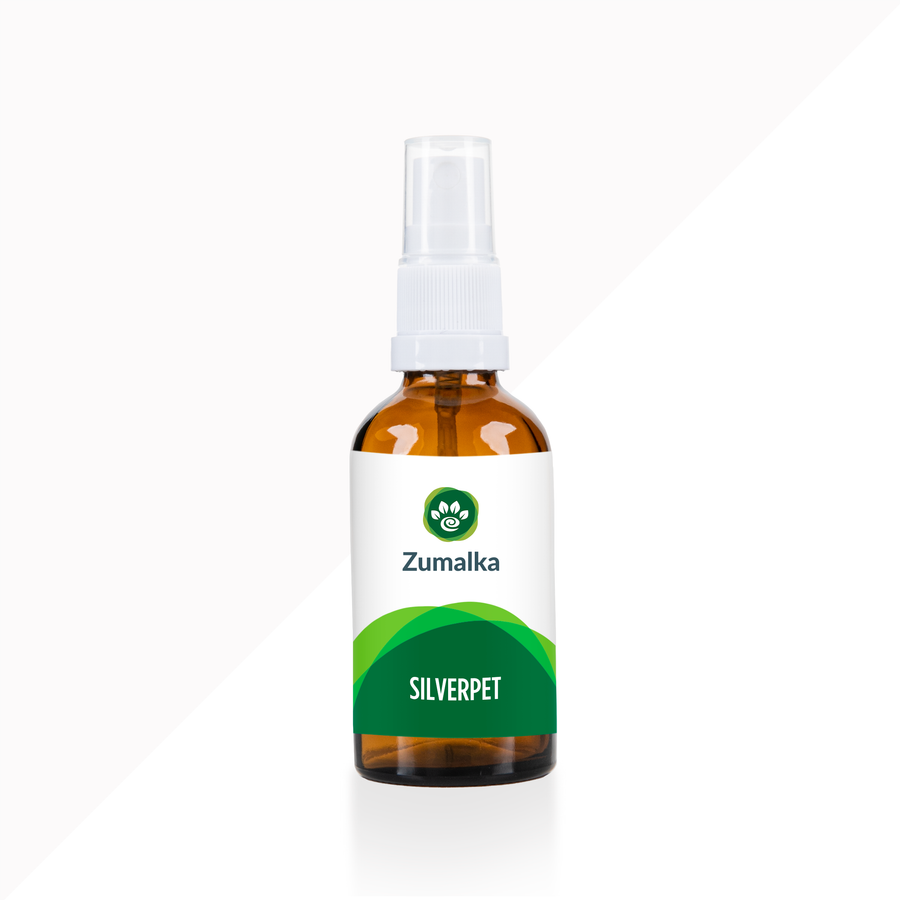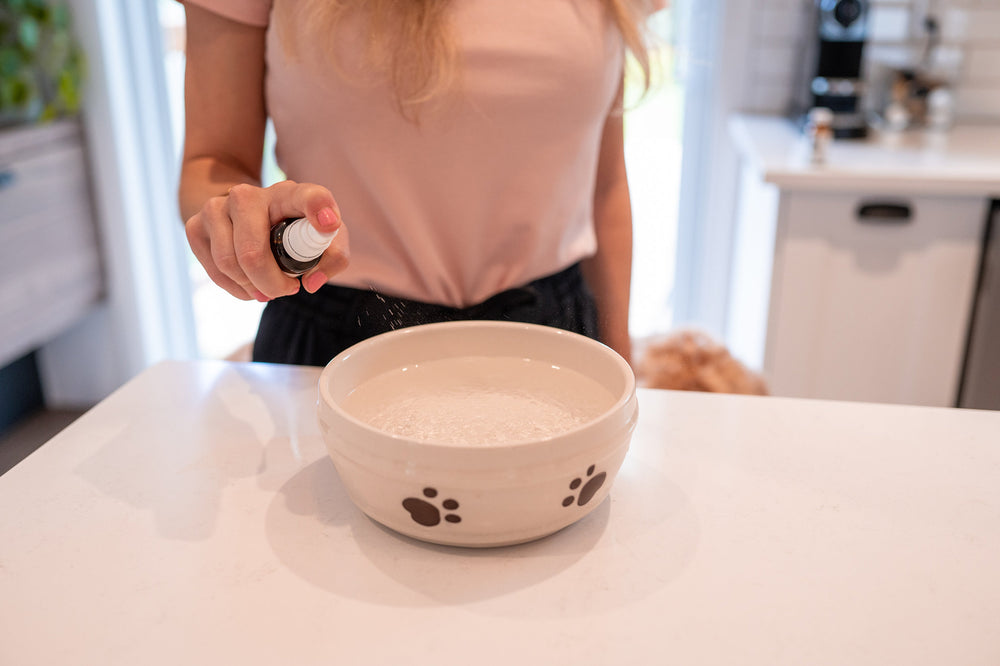Vet Insights: 5 Common Parakeet Health Problems Every Owner Should Know
List of Contents
Health issues in parakeets can quickly affect their playful nature and bright personality. If left untreated, minor problems may lead to serious complications. Timely care is essential to keep your parakeet happy and healthy.
But the thing is, parakeets are naturally skilled at hiding signs of illness, which makes early detection especially important. Understanding the subtle symptoms can help prevent minor issues from becoming serious.
This article shares essential information every parakeet owner should know about common health problems and how to address them.
5 Common Parakeet Health Problems to Watch For

We've grouped the most common budgie health issues into six categories for easier understanding. Each section includes a quick overview of causes, symptoms, and prevention tips to help you care for your budgie effectively.
#1. Infections
Common infections in budgies include Psittacosis (Parrot Fever), Avian Gastric Yeast (AGY), Candidiasis, sour crop, and those that affect the respiratory tract. Parasitic issues like scaly face mites, air sac mites, and protozoal infections such as Giardia and Trichomonas can also pose serious health risks.
Psittacosis
Psittacosis—also called Parrot Fever or Chlamydiosis—is a serious bacterial infection in budgies caused by Chlamydia psittaci, which is also transmissible to humans.
Common symptoms include respiratory issues like sneezing, tail bobbing, and nasal discharge, as well as diarrhea, lethargy, and appetite loss. Preventive measures include practicing good hygiene, quarantining new birds, and providing a balanced diet.
Avian Gastric Yeast (AGY) infection
Avian Gastric Yeast (AGY), also referred to as Megabacteria or Macrorhabdiosis, is an infection caused by Macrorhabdus ornithogaster, a yeast-like organism that targets the budgie’s digestive system.
Common signs include weight loss with a healthy appetite, undigested seeds in droppings, vomiting, diarrhea, and low energy. Prompt diagnosis and treatment are crucial to avoid severe complications and health deterioration.
Candidiasis
Candidiasis, commonly referred to as thrush or a yeast infection, occurs when Candida yeast overgrows in a budgie’s digestive tract.
Symptoms may include lethargy, foul-smelling vomiting, loose droppings, a swollen crop, and in advanced cases, balance issues or shaking fits. Early veterinary care is essential to treat the infection and prevent further complications.
Sour crop
Sour crop, also known as gas crop, is a condition in budgies caused by a yeast infection in the crop.
It leads to a swollen crop, sour-smelling vomit, and the regurgitation of foul-smelling mucus. Prompt treatment is crucial to relieve discomfort and prevent further digestive complications.
Respiratory infections
Respiratory infections in budgies can be caused by bacteria, viruses, fungi, or parasites, and may develop quickly if not addressed.
Symptoms include sneezing, coughing, nasal discharge, difficulty breathing, tail bobbing, lethargy, and resting at the bottom of the cage. Preventive care, such as maintaining a clean cage, ensuring proper ventilation, and avoiding environmental irritants, is key to keeping your budgie’s lungs healthy.
Scaly face
Scaly face in budgies is caused by Knemidocoptes pilae mites, which are highly contagious among birds.
It presents as white crusts around the beak, nostrils, eyes, and legs, and may lead to beak or leg deformities if left untreated. Affected birds often show signs of restlessness and excessive scratching, making early treatment essential for recovery and preventing spread.
Air sac mites
Air sac mites are tiny parasites that spread between budgies primarily through coughing and close physical contact. Once infected, these mites invade the bird’s respiratory system, often going unnoticed until symptoms become more severe.
Typical symptoms include coughing, sneezing, nasal discharge, breathing with an open beak, tail bobbing, head shaking, and unusual respiratory noises such as clicking or groaning.
Timely care from a veterinarian or a pet homeopathy specialist is crucial to relieve symptoms, support recovery, and prevent serious complications.
Protozoal infections
Protozoal infections in budgies, such as Giardia and Trichomonas, are caused by microscopic parasites that affect the digestive system.
Symptoms of Giardia include loose stools, itchiness, feather plucking, and distinctive "popcorn-like" droppings. Early diagnosis and targeted treatment are essential to prevent discomfort and further health complications.
#2. Nutritional deficiencies
Common nutritional deficiencies in budgerigars include low levels of vitamin A, iodine, calcium, and vitamin D—each of which can impact overall health and vitality if not properly addressed.
Vitamin A deficiency
Vitamin A deficiency in budgies is often caused by an all-seed diet lacking essential nutrients.
Birds with vitamin A deficiency may exhibit signs such as labored breathing, nasal discharge, crusty nostrils, low energy, diarrhea, and eye swelling. Preventing this condition involves offering a well-balanced diet that includes vitamin A-rich foods.
Iodine deficiency
Iodine deficiency, also known as goiter or hypothyroidism in budgies, is commonly caused by an all-seed diet or overconsumption of certain vegetables. This condition occurs in parrots that are particularly susceptible to thyroid problems.
Symptoms include respiratory wheezing, voice changes, breathing difficulties, weight loss, a lump on their neck (due to an enlarged thyroid gland), and regurgitation. Providing a balanced, iodine-enriched diet is essential to prevent thyroid issues and maintain overall health.
Vitamin D and calcium deficiency
Calcium and vitamin D deficiency in parakeets is often linked to seed-based diets that lack essential nutrients. This deficiency is a common cause of egg binding, a serious and potentially life-threatening condition in female birds.
Ensuring proper supplementation and access to natural sunlight or UV lighting is key to supporting bone health and reproductive function.
#3. Metabolic and organ issues
Common metabolic and organ disorders in budgerigars include liver disease, kidney problems, pancreatic dysfunction, and various types of tumors or cancers.
Liver disease
Liver disease, including fatty liver disease (hepatic lipidosis), is a common condition in budgies caused by poor nutrition, especially all-seed or high-fat diets, and obesity.
Symptoms may include an enlarged abdomen, overgrown beak, breathing issues, green droppings, diarrhea, poor feather quality, disorientation, and bleeding from the beak or claws. A balanced, low-fat diet and healthy weight management are essential for prevention and liver health.
Kidney problems
Kidney problems in budgies, including avian gout, can result from excess protein, calcium, or vitamin D3, as well as dehydration, salt toxicity, infections, or vitamin deficiencies.
Symptoms of gout include puffiness, swollen toes, white nodules near the feet, difficulty perching or flying, excessive thirst, and increased urination.
Preventing kidney issues involves providing balanced nutrition, clean water, and avoiding dietary excesses.
Pancreatic dysfunction
Pancreatic issues in budgies can be difficult to detect but may present as consistently light grey or grey-brown droppings.
Such changes in droppings may signal digestive issues or a potential problem with the pancreas. Early veterinary assessment is crucial to identify the cause and ensure proper treatment for your budgie’s digestive well-being. Consulting a pet homeopathy expert is also beneficial.
Tumors or cancers
Tumors (which can potentially become cancers) are relatively common in budgies and can develop in areas such as the kidneys, reproductive organs, fatty tissues, testicles, and adrenal glands.
Symptoms can include limping on one side from sciatic nerve pressure, changes in cere color, particularly in males with testicular tumors, and noticeable weight loss.
Early identification and natural support play an important role in managing tumors and promoting your budgie’s overall well-being. Consulting a pet homeopathy expert can offer gentle, complementary options. Veterinary guidance can also help with tumor management.
#4. Reproductive problems
Common reproductive issues in parakeets include egg binding, brown cere hypertrophy, and chronic egg laying.
Egg binding
Egg binding is a serious reproductive condition in parakeets, often caused by calcium or vitamin deficiencies, obesity, age, stress, or poor breeding practices.
Symptoms include straining, lethargy, a swollen abdomen, tail bobbing, open-mouth breathing, and sitting at the bottom of the cage. Immediate veterinary attention is crucial, as egg binding can become life-threatening without prompt treatment.
Brown cere hypertrophy
Brown hypertrophy of the cere is a condition commonly seen in older female parakeets and is caused by a hormonal imbalance.
It appears as a thick, crusty brown overgrowth on the cere above the beak. While usually benign, it should be monitored by a veterinarian to rule out underlying reproductive or hormonal issues.
Chronic egg laying
Excessive egg laying in parakeets is often triggered by hormonal imbalances and environmental cues such as extended daylight or perceived nesting conditions.
This condition can cause serious health problems such as low calcium levels, physical weakness, and seizures. To safeguard your parakeet’s reproductive health, it’s important to regulate lighting, provide a balanced diet, reduce stress, and seek guidance from a veterinarian or a qualified pet homeopath.
#5. Other notable health issues in budgies
Some common parakeet health issues may not involve infections or organ damage but can still have a serious impact on your bird’s overall health and well-being. These include:
Feather plucking or destructive behavior
Feather plucking in parakeets is often a sign of stress, boredom, poor diet, or underlying issues like parasites, skin infections, or allergies. This destructive behavior can seriously impact their health and feather condition.
Preventive care includes providing a stimulating environment, interactive toys, a balanced diet, and ruling out medical causes through veterinary evaluation.
Bumblefoot
Bumblefoot is a painful foot condition in parakeets caused by factors such as vitamin and mineral deficiencies, poor hygiene, obesity, trauma, or improper perching surfaces.
Symptoms include lameness, swelling, reluctance to walk, and red, scabby, or ulcerated feet. Preventing bumblefoot involves proper nutrition, clean living conditions, and providing well-designed perches to reduce pressure on the feet.
French molt
French molt is a condition in young parakeets often associated with Polyomavirus infection or severe stress.
Affected birds typically lose their primary wing and tail feathers, and may also have broken or poorly developed feathers. While not always life-threatening, proper care and veterinary evaluation are important to manage symptoms and support recovery.
Top Signs Your Budgie May Be Sick

Observant bird owners play a vital role in spotting early signs of illness. While parakeets often hide pain and discomfort, certain symptoms can indicate underlying health problems that need attention. These include:
- Abnormal droppings: Changes in color, consistency, or undigested food in droppings may signal digestive or systemic issues.
- Changes in perching behavior: Resting on the cage floor or using both legs to perch when one is typical may indicate weakness or discomfort.
- Lethargy or loss of interest: A noticeable drop in activity or disinterest in favorite toys or routines is a common early warning sign.
- Excessive daytime sleepiness: While short naps are normal, too much daytime sleep may indicate illness or fatigue.
- Sticky feathers on the head or face: This can suggest vomiting or nasal discharge, both of which may point to infection or digestive issues.
- Vomiting (not regurgitation): Vomiting, especially with a foul smell, is a sign of serious illness and should not be confused with regurgitation, which is often normal behavior.
- Unusual vocalizations: Excessive squawking or distress calls may reflect pain, fear, or physical discomfort.
- Fluffed-up feathers: Constantly puffed-up feathers can signal that your bird is cold, unwell, or trying to conserve body heat.
- Nasal discharge or gummed-up nostrils: Mucus or crusting around the nostrils may indicate respiratory infections or allergies.
- Overgrown or deformed beak or toenails: May be a sign of liver disease, nutritional imbalance, or lack of proper perching and grooming.
- Dirty vent area: A soiled vent can indicate diarrhea or other digestive problems that need attention.
- Blood on feathers: Could point to injury, broken feathers, or underlying health issues like tumors or parasites.
- Limping or favoring one leg: Often caused by injury, nerve pressure, or systemic illness affecting mobility.
- Changes in foot temperature: Unusually hot or cold feet can signal circulatory issues or systemic disease.
- Labored or noisy breathing: Breathing with an open beak, tail bobbing, or clicking/rasping sounds are signs of respiratory distress.
- Swollen or sore eyes: Discharge, swelling, or irritation around the eyes can be symptoms of infection, allergy, or trauma.
How to Prevent Common Parakeet Health Issues

To keep your parakeet healthy over the long term, make sure it eats a balanced diet with fresh fruits, veggies, and more than just seeds. Providing a clean, spacious cage with proper perches and enriching toys supports both physical and mental well-being.
Regularly cleaning the cage, as well as food and water dishes, helps prevent illness and promotes a healthy living environment. You can also keep your parakeet healthy by providing fresh, clean water daily and ensuring plenty of opportunities for exercise and mental stimulation.
A stable, stress-free environment—free from drafts, loud noises, and sudden temperature changes—is essential for their well-being. Consistent care like this supports both physical health and emotional balance in your feathered friend.
Quarantine any new birds before introducing them to your current parakeets to help prevent the spread of disease and ensure a smooth, stress-free transition.
Schedule regular visits with an avian veterinarian to monitor your parakeet’s health and catch any issues early, promoting a longer, healthier life. For a more holistic approach, consulting a pet homeopathy specialist can also offer additional support for your bird’s overall well-being
When to Seek Veterinary Care for a Sick Budgie
If you suspect your parakeet is unwell, seek veterinary care immediately—delaying treatment can put their health at serious risk. Consulting a qualified pet homeopath can also be invaluable.
Prompt action ensures any underlying issues are diagnosed and addressed before they worsen. Early detection and proper care greatly increase the chances of a full recovery and long-term health.
It’s crucial to find a veterinarian with experience in treating avian species, as birds require specialized care.
If your parakeet shows signs of illness while you wait for the appointment, isolate them from other birds, keep them warm, offer water and their favorite foods, and minimize stress. These simple steps can provide comfort and stability until professional help is available.
The Benefits of Natural Solutions for Your Parakeet’s Health
Looking to support your budgie’s vitality with a holistic approach? Zumalka’s premium natural products can help promote overall wellness and healthy organ function. Here are some top options to consider for boosting your parakeet’s health naturally:
- TONICPET #1: This natural supplement supports healthy bones, joints, muscles, and connective tissues, promoting flexibility and overall mobility. It's an excellent choice for pets with issues like stiff joints, weak teeth, eye irritation, or hardened tissue masses.
- TONICPET #2: This is a versatile natural tonic that supports strong bones, teeth, connective tissues, and muscles, making it ideal for healthy growth and recovery. It's especially helpful for pets dealing with growth disorders, cracked bones, poor circulation, digestive issues, itchy skin, and even ear inflammation or kidney mineral buildup.
- TONICPET #4: This natural product supports the body's normal inflammatory response, healthy oxygen flow, and balanced temperature regulation. It may be used to help maintain strength and vitality in pets experiencing fatigue or recovering from physical strain.
- TONICPET #5: This supports overall wellness by helping maintain healthy circulation and respiratory function. It assists in promoting comfort in pets experiencing occasional congestion, nasal discharge, or inflammation.
- TONICPET #9: This natural tonic is formulated to support fluid balance in the body and help maintain proper hydration. It also assists in supporting red blood cell health and overall vitality in your pet.
- TONICPET #12: This product is designed to support the body's natural detoxification processes and maintain healthy skin and coat condition. It can also assist with fur regrowth and overall skin vitality.
A Final Word
Responsible parakeet ownership begins with understanding the common health challenges these birds may face. Staying informed allows you to recognize early signs of trouble and take timely action. By being attentive and proactive in your bird’s care, you help ensure a long, healthy, and fulfilling life for your feathered companion.
Supporting your parakeet’s health is a fulfilling journey that strengthens the bond between you and your bird. With proper care, your parakeet can flourish, bringing color, energy, and happiness into your daily life.
FAQs
What kind of illnesses do parakeets get?
Parakeets are prone to illnesses like respiratory infections, diarrhea, feather loss, mites, and nutritional deficiencies. Recognizing symptoms early and seeking prompt veterinary and pet homeopathic care can help maintain your parakeet’s health and overall well-being.
How can you tell if a parakeet is unhealthy?
An unhealthy parakeet may show signs like fluffed-up feathers, lethargy, loss of appetite, changes in droppings, labored breathing, or unusual behavior. Observing these symptoms early is crucial for prompt treatment and recovery.
What can make a parakeet sick?
Parakeets can get sick from poor diet, dirty cages, stress, drafts, infections, or exposure to toxins. Maintaining a clean environment and balanced nutrition is key to preventing illness and keeping them healthy.
What problems do parakeets cause?
Parakeets may cause problems like loud vocalizations, chewing on household items, and occasional mess from feathers or droppings. With proper training, stimulation, and care, these behaviors can be managed while enjoying their playful companionship.
What is the life expectancy of a parakeet?
The average life expectancy of a parakeet is 10 to 15 years with proper care. A healthy diet, regular vet check-ups and pet homeopathic consultations, mental stimulation, and a clean, stress-free environment greatly contribute to their longevity and well-being.
What do parakeets look like when they are sick?
Sick parakeets may appear fluffed up, inactive, or unusually quiet. They might show changes in droppings, appetite loss, labored breathing, or drooping wings—clear signs it's time to seek veterinary or pet homeopathy care.
How to tell if your parakeet is in pain?
A parakeet in pain may show signs like fluffed feathers, rapid breathing, decreased movement, vocal distress, or avoiding touch. Subtle changes in behavior often signal discomfort, so prompt veterinary attention is essential.
What does sick parakeet poop look like?
Sick parakeet poop may appear watery, discolored, unusually green, yellow, or have an abnormal texture or odor. Changes in droppings are often early signs of illness and should prompt veterinary attention. Consulting a qualified pet homeopath is also helpful.
What color is healthy parakeet poop?
Healthy parakeet poop typically has three parts: a dark green to brown solid, white urates, and clear urine. Consistent color and texture indicate good health, while changes may signal dietary issues or illness.
How do I know if my parakeet is cold?
A cold parakeet may puff up its feathers, shiver, become less active, or perch with one foot tucked. These signs suggest discomfort and indicate it’s time to warm their environment safely.
How do I know if my parakeet is sad?
A sad parakeet may become quiet, withdrawn, lose interest in toys or food, and show changes in posture or vocalization. Lack of interaction and reduced activity often signal emotional distress needing attention and enrichment.
How to tell if a bird is overheating?
An overheating bird may pant, hold its wings away from its body, appear restless, or breathe rapidly. Immediate cooling and hydration are essential to prevent heat stress or heatstroke.
How to warm up a parakeet?
To warm up a parakeet, move it to a draft-free, quiet area and use a heating pad under the cage or a heat lamp nearby. Ensure gradual warmth and monitor for signs of improvement.








Hi, I am getting a bird today! Thanks for the helpful article! :)
Hi Rex,
Thank you for your comment and excellent question.
We are actually a website that offers homeopathic remedies for pet (this blog article is for informational purposes written by a specialist but is not part of our Homeoanimal staff), so would love to give you tips, but since it is not our field of expertise, we would not want to give you any bad advice :)
We hope you find what you are looking for.
Regards,
Homeoanimal.com
What is the best option to take care of a parakeet when a week long family trip is planned?
Hi Stacee,
Thank you for your post and I’m so truly sorry to hear about your poor baby bird! I know how difficult it is to see them pass. But for more details on what can help you and any new birds or other pets you may welcome into your home and family, we have sent you a private email. Please be sure to have a look at it and let us know if you need any further assistance.
Warm regards,
Homeoanimal
Hi,
We recently added a parakeet to our family and only after three weeks our bubbly cute little bird was found at the bottom of his cage lifeless. So tragic and we just don’t know what we did wrong. He seemed so bubbly and fine the evening before. I am left thinking it was possibly something he might have eaten off the floor of my teen sons room, or some fumes from cooking that wafted up, but we just don’t know.
We’d like to try again but any advice to make sure we don’t repeat (our?) mistakes would be super appreciated. Thank you so much in advance- Stacee
Leave a comment